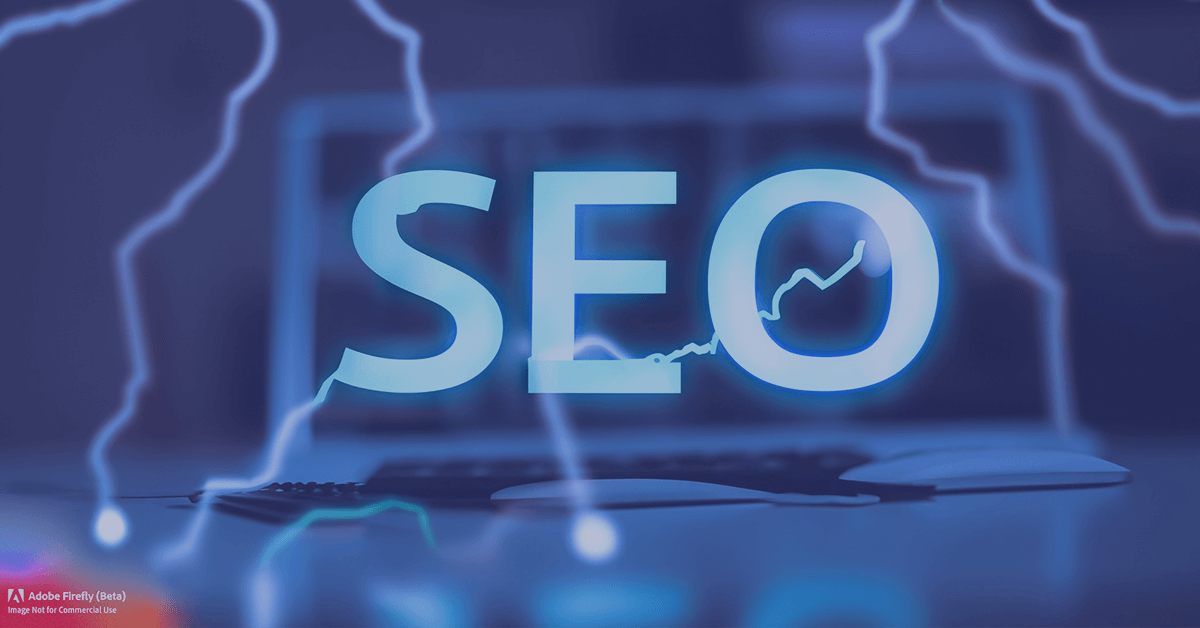
Search engine optimization (SEO) involves various strategies and techniques for enhancing a website’s visibility and ranking on search engine result pages (SERPs). Two main approaches are Technical SEO and Content SEO. While both share the goal of driving organic traffic to a website, they focus on different aspects and employ distinct tactics to achieve their objectives.
Focus
Technical SEO: Technical SEO primarily focuses on optimizing a website’s technical aspects to improve its performance, crawlability, and indexability by search engines. This includes working on website structure, code, and various technical elements. The goal is to ensure that search engines can easily access, understand, and index the website’s content.
Content SEO focuses on creating high-quality, relevant, and engaging content that attracts and satisfies the target audience. It involves extensive research and optimization of keywords, on-page elements, and overall content strategy. The goal is to create valuable content that aligns with user intent, increases organic traffic, and drives meaningful engagement on the website.
Primary Goal
Technical SEO: The primary goal of Technical SEO is to improve a website’s overall performance and visibility in search engine rankings. By optimizing technical aspects, it aims to enhance crawlability, indexability, and user experience, leading to higher search engine visibility and rankings.
Content SEO: The primary goal of Content SEO is to create content that resonates with the target audience and attracts organic traffic. By focusing on relevance, quality, and engagement, content SEO aims to increase the website’s visibility, drive traffic, and encourage user interaction and conversions. It seeks to align content with user search queries and provide valuable information or solutions, ultimately leading to higher rankings in search engine results.
Key Areas
Technical SEO: Technical SEO covers many areas, including website speed optimization, ensuring mobile-friendliness and responsive design, URL structure, XML sitemaps, internal linking, fixing broken links, proper implementation of redirects, canonical tags, and optimizing robots.txt files. The focus is ensuring that search engines can efficiently crawl and index the website’s pages, improving visibility and better user experience.
Content SEO: Content SEO primarily focuses on optimizing on-page elements such as keyword research and optimization, creating compelling and informative content, optimizing headings and subheadings, crafting relevant and appealing meta tags (title tags, meta descriptions), structuring content for readability, effectively utilizing internal and external links, and implementing schema markup. The aim is to create content that meets user needs, improves search engine relevance, and encourages user engagement.
Technical Aspects
Technical SEO: Technical SEO involves working on various technical elements of a website, including server configurations, URL structure, redirects, canonical tags, XML sitemaps, SSL/HTTPS implementation, site speed optimization, mobile-friendliness, structured data, and more. These technical aspects help ensure the website is accessible to search engine crawlers and provides a smooth user experience.
Content SEO: Optimizes HTML elements such as title tags, meta descriptions, headings (H1, H2, etc.), and image alt attributes. It also involves keyword research and optimization to identify relevant search terms and use them strategically throughout the content. Additionally, content optimization includes creating valuable and engaging content, organizing it with proper headings and subheadings, incorporating internal and external links, and implementing structured data or schema markup for enhanced search engine visibility.
Key Activities
Technical SEO: Key activities in Technical SEO include performing website audits to identify technical issues, optimizing site structure and navigation, conducting site speed optimization, resolving crawl errors and broken links, implementing redirects, improving mobile-friendliness and responsive design, managing XML sitemaps, optimizing robots.txt file, and ensuring proper canonicalization.
Content SEO: Content SEO involves activities such as conducting comprehensive keyword research to identify target keywords, creating high-quality and informative content, optimizing content for target keywords, ensuring proper use of headings and subheadings, creating compelling meta tags, building a strategic internal linking structure, crafting engaging calls-to-action, monitoring content performance and user engagement, and continuously updating and optimizing content based on user feedback and search engine trends.
Resulting Benefits
Technical SEO: Implementing Technical SEO practices can improve website visibility, search engine rankings, and user experience. It can also lead to faster page load times, better crawl ability, and indexability, which can increase organic traffic and attract more potential customers. Additionally, Technical SEO helps search engines understand and display relevant information about the website in search results, which can lead to higher click-through rates and better overall performance.
Content SEO: Benefits include increased organic traffic from search engines, improved user engagement, higher time on page, reduced bounce rates, and increased conversions. By creating valuable and relevant content, businesses can establish themselves as authorities in their industry, build trust with their audience, and attract loyal customers. Moreover, content that aligns with user intent and answers their questions can enhance the overall reputation and visibility of the website in search engine rankings.
Measurement Metrics
Technical SEO: Metrics to measure the success of Technical SEO include website loading speed, crawl errors and status codes, mobile usability and friendliness, XML sitemap functionality, server response time, and overall site performance in search engine tools like Google Search Console.
Content SEO: Content SEO success can be measured through organic traffic growth, page views, time on page, bounce rates, engagement metrics (comments, social shares), keyword rankings, backlink profile, and conversion rates. Analytics platforms like Google Analytics provide valuable insights into user behavior and engagement, helping to gauge the effectiveness of content in attracting and retaining website visitors.
Implementation
Technical SEO: Implementing technical SEO often requires technical expertise and knowledge of web development. It involves collaborating with web developers, server administrators, and IT teams to implement necessary changes and optimizations. This may include modifying website code and server configurations and performing technical adjustments.
Content SEO: Implementing content SEO involves a combination of skills such as keyword research, copywriting, and on-page optimization. It requires creating high-quality and engaging content that meets the target audience’s needs and aligns with search engine guidelines. Content creators, copywriters, and SEO specialists collaborate to ensure proper keyword usage, content structure, and optimization of on-page elements.
Long-Term Strategy
Technical SEO: Technical SEO sets the foundation for a website’s long-term growth and performance. It focuses on ensuring that the website is accessible and crawlable and provides a seamless user experience. Technical SEO practices must be regularly monitored and adjusted as search engine algorithms evolve and new technologies emerge.
Content SEO: Content SEO is an ongoing process that involves continuous creation, optimization, and refinement of valuable content. It requires a long-term strategy to create high-quality content that remains relevant and engaging to the target audience. Content strategies need to adapt to changing user demands, search engine trends, and industry developments to maintain and improve organic visibility and user engagement over time.
Interdependence
Technical SEO: Technical SEO and Content SEO are interdependent and work together to achieve optimal results. Technical SEO ensures that search engines can effectively crawl, index, and understand the website’s content. Content SEO complements this by creating high-quality and relevant content that aligns with user intent. Without proper technical optimization, content may not reach its full potential in search rankings, and without valuable content, technical optimizations may have limited impact.
Content SEO: Content SEO and Technical SEO are closely intertwined. High-quality content needs technical optimization for better visibility, while technical optimization alone may not provide the desired results without relevant and engaging content. Both aspects should be implemented together, with Technical SEO providing a strong foundation and Content SEO delivering valuable content to drive organic visibility and user engagement.
Example Activities
Technical SEO: Example activities in Technical SEO include optimizing server configurations for improved website performance, implementing structured data and rich snippets, ensuring proper URL canonicalization, optimizing website speed and mobile-friendliness, fixing broken links and redirects, and improving XML sitemaps.
Content SEO: Example activities in Content SEO include conducting keyword research to identify target keywords, creating informative blog posts and articles, optimizing meta tags (title tags, meta descriptions), incorporating relevant keywords in content, structuring content with proper headings and subheadings, strategically leveraging internal and external links, and implementing schema markup to enhance search engine visibility.
Contact Overdrive Interactive For Data-Driven SEO Services
Optimizing your online presence for SEO services is more than just using simple keywords. Comprehensive strategies such as international SEO, local SEO services, and technical SEO help businesses target relevant audiences and increase their rankings in global and local search engine results. As well as behind-the-scenes SEO efforts like regular SEO audits, on-page SEO & off-page SEO improvements, Earned Media, and more, make sure your site remains competitive. An effective SEO content strategy and SEO keyword research are essential to driving organic traffic and increasing your brand’s visibility online.





